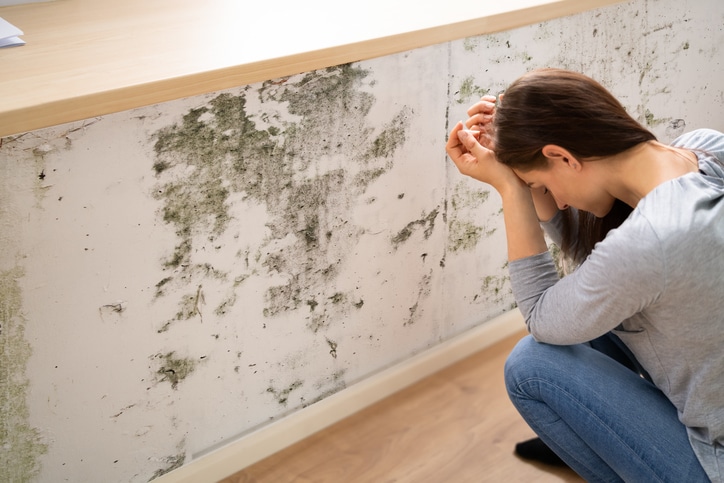Mould is a common issue in many homes and buildings, especially in areas with high humidity or moisture problems. While mould might seem like a minor nuisance, it can pose significant health risks if left unchecked. Hazardous materials assessments are a crucial step in identifying and mitigating these risks, ensuring a safer and healthier living environment. Here’s how inspections can prevent health risks, and why they are essential.

Understanding Mould and Its Health Implications
Mould is a type of fungus that thrives in damp, warm, and humid conditions. It can grow on various surfaces, including walls, ceilings, carpets, and furniture. This harmful substance reproduces by releasing tiny spores into the air, which can be inhaled by people and pets. While some are relatively harmless, others can produce allergens, irritants, and mycotoxins, which can cause health problems.
Health issues associated with mould exposure include:
- Allergic Reactions: Spores can trigger allergic reactions in sensitive individuals. Symptoms may include sneezing, runny nose, red eyes, and skin rashes.
- Respiratory Problems: Inhaling spores can cause respiratory issues, such as coughing, wheezing, and throat irritation. People with asthma or chronic lung conditions may experience more severe symptoms.
- Infections: Certain types of mould can cause infections, particularly in individuals with weakened immune systems. For example, Aspergillus can lead to aspergillosis, a serious lung infection.
- Toxic Effects: Some produce mycotoxins, which can have toxic effects on humans. Prolonged exposure to high levels of mycotoxins can lead to neurological problems, immune suppression, and other severe health issues.
The Importance of Mould Inspections
Hazardous materials assessments are essential for detecting and addressing muld problems before they become severe health hazards. Here’s how inspections can help prevent health risks:
Early Detection
mould inspections can identify growth early, often before it becomes visible. Inspectors use specialized tools and techniques, such as moisture meters and thermal imaging, to detect hidden materials in walls, ceilings, and other concealed areas. Early detection allows for prompt remediation, reducing the risk of it spreading and causing health issues.
Identifying Moisture Sources
Mould thrives in moist environments. A thorough inspection can identify sources of moisture, such as leaks, condensation, and poor ventilation. Addressing these underlying issues is crucial for preventing growth and protecting indoor air quality.
Assessing Air Quality
Hazardous materials assessments often include air quality testing to measure the concentration of spores in the air. High levels of spores can indicate an ongoing problem that needs immediate attention. Air quality assessments help determine the severity of contamination and guide remediation efforts.
Comprehensive Remediation Plans
Professional inspectors provide detailed reports and remediation plans based on their findings. These plans outline the steps needed to remove mould, repair damaged areas, and prevent future growth. Following these recommendations can effectively mitigate health risks.
Protecting Vulnerable Populations
Mould inspections are particularly important for protecting vulnerable populations, such as children, the elderly, and individuals with respiratory conditions or weakened immune systems. These groups are more susceptible to the adverse health effects of exposure. Regular inspections can help ensure a safe living environment for these individuals.
Maintaining a Healthy Environment
Preventing growth and maintaining good indoor air quality requires ongoing vigilance and preventive measures. Here are some tips to keep your home mould-free:
- Control Humidity: Keep indoor humidity levels below 60% using dehumidifiers and air conditioners.
- Fix Leaks Promptly: Repair leaks in roofs, walls, and plumbing to prevent moisture buildup.
- Ensure Proper Ventilation: Use exhaust fans in bathrooms and kitchens to reduce moisture and improve air circulation.
- Clean and Dry: Clean and dry any damp or wet materials and surfaces promptly. Regularly clean areas prone to mould, such as bathrooms and basements.
- Monitor and Inspect: Conduct regular inspections and monitor for signs of growth, such as musty odors and visible mould spots.
Gain the Help of a Professional
Hazardous materials assessments are a vital tool for preventing health risks associated with mould exposure. Regular inspections, combined with preventive measures, can protect you and your family from the harmful effects of mould and ensure a safer, healthier home.
Alberta Safety & Environmental Services (ASE Services) is one of the most reputable providers of Hazardous materials assessment and hygiene inspection services—including asbestos, lead, mould, mercury, and silica detection, as well as industrial hygiene testing for grow ops and other facilities. With a background in Alberta’s Occupational Health & Safety Commission and professional project management skills, our qualified staff can provide reliable handling of air quality and industrial hygiene from initial industrial inspection all the way to remediation programs. Whether just for a permit, or in-depth air quality control, we can help. Feel free to reach out and secure air quality and hygiene requirements for your building.
